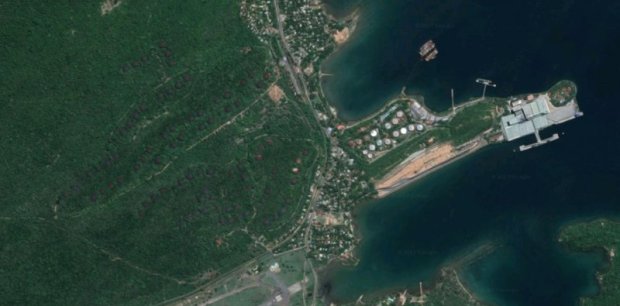Sri Lanka claims majority stake in Trincomalee oil tanks JV
Indian High Commission says no agreement reached, negotiations still on
By P.K. Balachandran
COLOMBO – Sri Lanka’s Energy Minister, Udaya Gammanpila, claimed on Wednesday (17) that the Indian High Commissioner, Gopal Baglay, has agreed a Joint Venture (JV) should be established to manage 84 oil tanks in Trincomalee and that the Ceylon Petroleum Corporation (CPC) should be the majority shareholder with the Lanka Indian Oil Corporation (LIOC) as the other shareholder.
“We were able to discuss and resolve all the issues with the Indian High Commissioner,” Gammanpila said, commending High Commissioner Baglay for being flexible and putting aside the conditions set in the agreement signed in 2017.
Gammanpila stated that Sri Lanka will soon re-acquire the Trincomalee Oil Tank Complex, “which the country had lost in 2003.”
He also said the government’s stand has the backing of the CPC top brass and its powerful unions.
But the Indian High Commission denied that any such agreement had been reached and insisted that negotiations had not been concluded.
The Indian High Commission in a statement said: “India and Sri Lanka have identified energy partnership as one of the priority dimensions of their cooperation. India is committed to working together with Sri Lanka for the island’s energy security. In this context, consultation and discussions have been undertaken to promote mutually beneficial cooperation for development and operation.”
In Indian eyes, discussions are still on and the Sri Lankan minister has jumped the gun.
The issue of the development and management of the 84 giant World War II-era oil tanks in Trincomalee in Eastern Sri Lanka have been dogged by controversy and uncertainty since the end of the war against the Tamil rebels in 2009.
In 2003, the then Sri Lankan government headed by Prime Minister Ranil Wickremesinghe, handed over 99 tanks in the oil tank farm to the Indian Oil Corporation (IOC) to be refurbished and used. India’s presence in Trincomalee was considered necessary to keep the Liberation Tigers of Tamil Eelam (LTTE) away. Trincomalee was a major Sri Lankan naval base which had to be protected from the marauding Tigers.
Of the 99 tanks, 15 were refurbished by the IOC. It used 14 of them and gave one to the Sri Lankan Air Force. The rest (84 tanks) have been in a state of disrepair and neglect since then.
When Mahinda Rajapaksa became Sri Lankan President for the second time in 2010 after the end of the war against Tamil separatists, his government demanded that the IOC hand back the unused tanks. But India refused to do so saying that the 2003 agreement was a government-to-government one which could not be altered unilaterally without re-negotiation.
However, New Delhi was open to setting up a Joint Venture between the Lanka Indian Oil Company (LIOC), a wholly owned subsidy of the IOC, and the Ceylon Petroleum Corporation (CPC). Despite this decision, no further movement took place in the matter. During his visit to Sri Lanka in 2015, the Indian Prime Minister Narendra Modi reiterated that the 84 unused tanks would be run as a Joint Venture and that a Task Force would be set up to implement this.
On May 24, 2015 the Sri Lankan Cabinet approved a paper by subject Minister Chandima Weerakkody seeking the title to, and the ownership of, 16 tanks. But the government of India was not in favour of this. In June 2016, both parties decided to set up a Joint Venture to develop 30 tanks. That too came to naught.
In April 2017 after deliberations involving President Maithripala Sirisena and Indian High Commissioner Taranjit Singh Sandhu, the government decided to lease out the tanks for joint development. The move was to hand over all the tanks to the Indian authorities. But President Sirisena insisted that at least ten tanks should be vested with the Sri Lankan side. Weerakkody went a step further and insisted that 15 should be handed back to Sri Lanka. As before, these proposals were not implemented.
-ENCL


